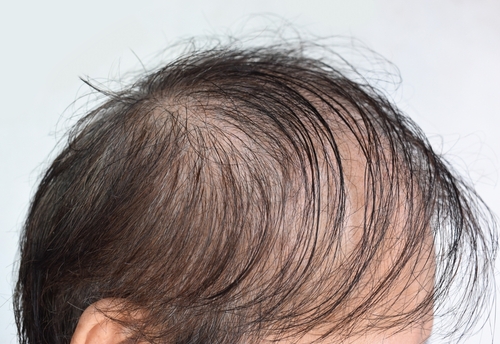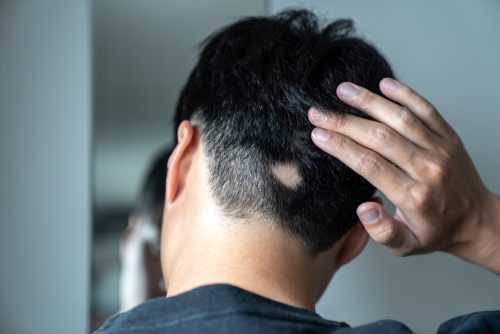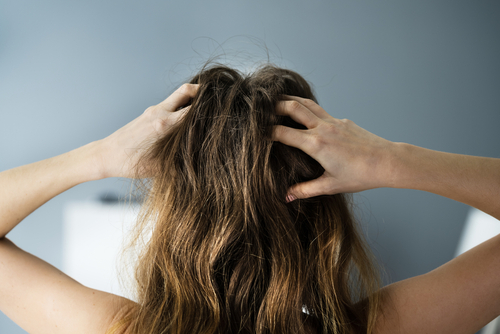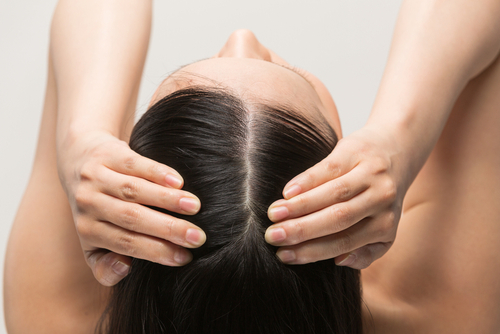
How To Deal With Post-Hair Implant Itching
July 24, 2023
Hair Implants for Frontal Baldness
September 26, 2023Types of Hair Loss, Causes, and Solutions

Types of Hair Loss, Causes, and Solutions
Types of Hair Loss, Causes, and Solutions. Hair loss, an issue that resonates with millions worldwide, can arise from various factors– from genetics to lifestyle choices.
An in-depth comprehension of its various types and underlying causes lays the groundwork for effective solutions. This comprehensive guide delves into the diverse spectrum of hair loss, shedding light on its causes and potential remedies.
The Pervasive Concern of Hair Loss
Hair loss is not merely a cosmetic concern; it profoundly impacts an individual’s self-esteem and emotional well-being. From receding hairlines to thinning crowns, its effects extend beyond the physical realm, often affecting self-confidence and overall quality of life.
Understanding the intricacies of hair growth cycles is essential in comprehending hair loss. Hair goes through anagen (growth), catagen (transition), and telogen (resting) phases. Hair loss can occur when these cycles are disrupted due to various factors.
Androgenic Alopecia

Androgenic alopecia, commonly known as male and female pattern baldness, is the most prevalent form of hair loss. It is a hereditary condition that gradually leads to hair thinning and receding hairlines in men and women.
Causes:
Genetics and hormonal factors play a pivotal role in androgenic alopecia. Dihydrotestosterone (DHT) shortens the hair growth cycle, producing finer and shorter hair strands.
Solutions:
Minoxidil, an over-the-counter topical solution, and finasteride, a prescription medication, are common treatments for androgenic alopecia. Hair transplants offer a more permanent solution by relocating healthy hair follicles to areas of thinning.
Telogen Effluvium: Stress-induced Shedding

Understanding Hair’s Resting Phase
Telogen effluvium occurs when many hair follicles enter the telogen phase simultaneously, leading to excessive shedding. This type of hair loss is often triggered by stress or trauma.
Common Triggers
Stressors like childbirth, surgery, severe illness, and certain medications can prompt telogen effluvium. These events disrupt the hair growth cycle, causing hair to enter the resting phase prematurely.
Management and Recovery
Managing telogen effluvium involves addressing the underlying stressors and ensuring a balanced diet rich in essential nutrients. Hair growth typically returns to normal within a few months as the triggering factor resolves.
Alopecia Areata: The Immune Attack

This is an autoimmune condition where the immune system mistakenly attacks hair follicles. This leads to sudden hair loss in small, round patches on the scalp or other body areas.
Identifying Signs
Distinctive signs of alopecia areata include circular bald patches, sometimes accompanied by “exclamation mark” hairs – short, broken hairs that taper near the scalp.
Treatments
Treatment approaches include corticosteroid injections to suppress the immune response and stimulate hair regrowth. Topical immunotherapy involves applying irritants to the scalp to encourage hair follicle recovery.
Traction Alopecia

Traction alopecia arises from prolonged tension on hair follicles due to tight hairstyles, hair extensions, or the constant use of hair accessories.
Recognizing Early Signs and Affected Areas
The hairline, temples, and nape are common areas where traction alopecia manifests. Early signs include hair breakage, thinning, and receding hairlines.
Preventive Measures and Treatment Options
Preventing traction alopecia involves opting for looser hairstyles and minimizing strain on the hair. Hair regrowth is possible if detected early by discontinuing damaging practices and adopting a hair-friendly routine.
Cicatricial (Scarring) Alopecia

Cicatricial alopecia is characterized by inflammation that permanently damages hair follicles, replacing them with scar tissue. This irreversible condition is a result of various inflammatory skin disorders.
Identifying Symptoms
Early symptoms include itching, pain, and redness of the scalp. As the condition progresses, hair follicles are gradually replaced by fibrous tissue, leading to hair loss.
Approaches
Managing cicatricial alopecia involves addressing the underlying inflammatory condition. Medical treatments aim to reduce inflammation and prevent further follicle damage. In severe cases, hair transplantation may be an option.
Nutritional Deficiencies: The Role of Diet

Nutrition plays a crucial role in hair health. Deficiencies in essential nutrients can lead to weakened hair shafts, premature hair shedding, and slower regrowth.
Iron deficiency can result in anemia-related hair loss, while insufficient zinc intake may lead to hair thinning. Biotin, a B vitamin, is essential for strong hair structure.
Addressing nutritional deficiencies involves consuming a well-balanced diet rich in vitamins, minerals, and proteins. In some cases, supplements can help bridge the nutrient gap.
Hair Loss from Medical Treatments
Chemotherapy and radiation, while crucial in treating cancer, can result in hair loss due to their effect on rapidly dividing cells, including hair follicles.
Hair loss due to chemotherapy is often temporary, with regrowth occurring after treatment. In contrast, radiation-induced hair loss may be permanent if hair follicles are irreversibly damaged.
Coping with treatment-induced hair loss involves exploring head-covering options, such as wigs and scarves. Hair regrowth can take several months post-treatment, and hair may initially differ in texture or color.
Choosing the Right Treatment
An accurate diagnosis is the foundation for effective treatment. Consulting a dermatologist or trichologist can help identify hair loss’s specific type and underlying cause.
Treatment options range from medical interventions like topical medications to surgical procedures such as hair transplants. Natural approaches, including lifestyle changes and hair care routines, also play a role.
Early intervention enhances the success of hair loss treatment. Consulting with experts ensures personalized recommendations tailored to individuals’ unique conditions and goals.
Types of Hair Loss, Causes, and Solutions – Conclusion:

While hair loss can be emotionally distressing, it’s essential to remember that effective solutions exist.
Through knowledge, expert guidance, and tailored treatments, individuals can navigate the path of hair restoration with resilience and confidence.
Are you seeking professional and reliable hair implant services in Singapore? Contact us today!




